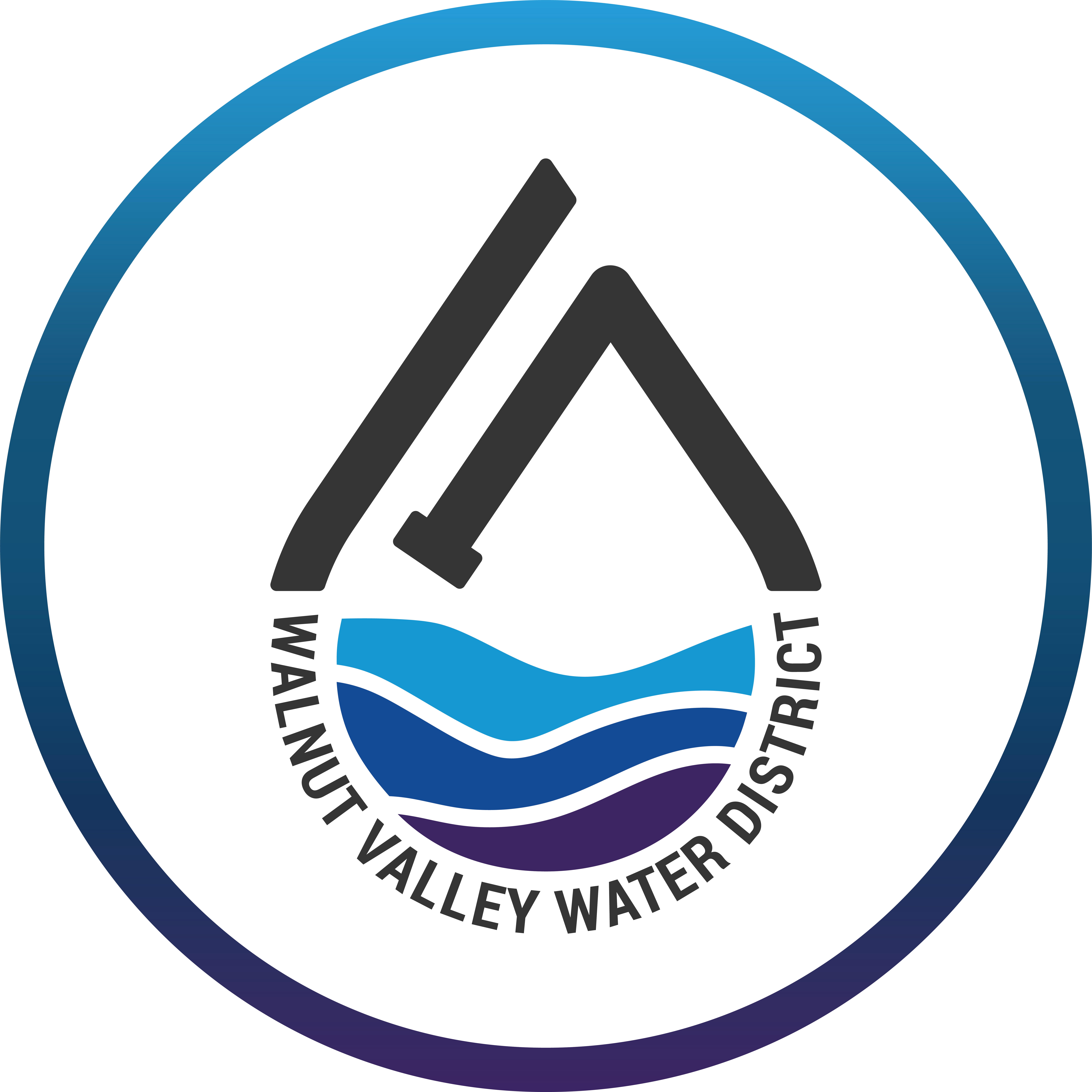Meter and Leak Information
How To Check for Leaks
To check if you have a leak, turn off all faucets in your home, check the water meter located outside, wait 15 minutes, and check the meter again. If the sweep hand has moved, or the reading has changed, you may have a leak.
At Home Leak Detection Walkthrough
WVWD is here to help you maintain a water-efficient lifestyle. Leaks at homes, apartments, commercial properties, and landscapes can result in thousands of gallons of wasted water, bill increases, and potential property damage if not addressed promptly. There are steps residents and businesses can take to reduce the chance of wasteful indoor and outdoor leaks. Routine maintenance and repairs can add up to savings on your water bill and help conserve our precious water supply.
You can monitor your daily water usage through the WVWD customer portal, which provides access to your individual water usage. By updating your mobile phone and email address, you will receive an email and text notification from WVWD should you have a leak.
Log into the “My Account” customer portal to get started.
Speak with a Customer Service Representative to learn more about your water usage by calling (909) 595-7554 or emailing cservice@walnutvalleywater.gov. A representative is available to assist you during regular business hours:
• Monday through Thursday from 7:00 a.m. to 5:00 p.m.
• Friday from 7:00 a.m. to 4:00 p.m.
Use our “Leak Detection Walk-Through” to perform a leak detection assessment at home. This quick checklist will help you identify potential leaks and inform you of potential water savings.
Repairing Leaks
Leaks in and around your home are a common cause of water waste and increase your monthly water bill. Leaks should be repaired as soon as possible to prevent damage to your home and avoid costly water bills. Walnut Valley Water District does not fix leaks inside your home or leaks associated with your landscape/outdoor irrigation. The District’s purview extends from the water meter out, anything associated past the water meter (your home) is the customer’s responsibility.
Before work on any scheduled leak repairs begin, please refer to the meter connection diagrams for your home. It is important that you or your repair person/plumber properly connects to the water meter according to District standards to avoid customer liability of any damage or alteration. If you are unsure of where to make the water meter connection, please call us at (909) 595-7554 or email cservice@walnutvalleywater.gov.
Leak Alerts
WVWD’s automatic Leak Alert sends courtesy email and text notifications to single-family and multi-family residences, commercial, industrial, and municipal properties, and irrigation accounts. We notify the account holder of continuous water use over a 24 hour period.
Automated meters enable WVWD to provide customers timely and accurate information about water use down to the hourly level. Customers can view their water use through our ‘”My Account” customer portal.
We send leak alerts by email and mobile phone text SMS relying on the contact information we have on file in our billing system. Please update your account contact information through our online My Account platform. If you haven’t yet registered to use My Account, sign up is simple but requires having a copy of your water bill to refer to or knowing your account number. If you don’t have a copy of your bill and don’t know your water account number, contact our Customer Service team at cservice@walnutvalleywater.gov or (909) 595-7554.
Why did I receive a leak alert?
Our leak alert is a courtesy to inform you that the water meter at your property has recorded continuous water usage for at least 24 hours. In residential properties there are typically periods during the day or night, often when residents are sleeping, when water fixtures and irrigation systems would not be running and no water use is occurring. Therefore, it is unusual for the meter in a single-family home, small multi-family building, or property with an irrigation account to register usage continuously for consecutive 24-hour periods and this may indicate a leak or a tap, hose bib, or valve accidentally left on.
For all property types, we recommend you check and fix potential leaks or other causes of high water use. While WVWD’s courtesy alerts and My Account customer platform can help inform you if constant usage is occurring, customers are responsible for finding and addressing leaks at their property.
How was the continuous usage identified?
The Automated Meter Infrastructure (AMI) at your property provides us with information on hourly water usage. The meter readings we receive identify every hundred cubic foot of water used each hour (1 ccf is equal to 748 gallons).
If our data shows continuous water flow for 24 hours, we will notify the water account holder by email and mobile phone text, for all methods we use current contact information on file.
Does this mean I have a leak?
Continuous water usage may indicate your property has a plumbing or irrigation system leak or that a tap or hose bib was left running. WVWD cannot repair any leaks outside of our boundary, beyond the meter. That means indoor leaks and irrigation leaks need to be fixed by the account holder, property owner, or a plumber.
Register or log on to My Account to view your household’s or property’s hourly, daily, weekly and monthly water use. Sudden increases in water use could mean a plumbing or irrigation system leak has developed or some other unusual water use is occurring. If your hourly water usage never went to zero over a 24 hour period and/or had a sustained spike in usage, it could indicate you have an ongoing leak.
Do I need to contact WVWD if I receive a leak alert?
Our leak alerts are issued as a courtesy. You do not need to contact us if you receive one unless you would like assistance with WVWD’s Water Conservation Incentive Programs. Use the resources on our website and My Account for guidance on how to identify the most common types of leaks that may be occurring around your home, multi-family property, or landscape. If you suspect you have a leak but cannot repair it, please contact a plumber or irrigation expert. Customers are responsible for repairing leaks on their property. Routine water-fixture and irrigation system maintenance and repairs can help prevent leaks and avoid wasted water and money.
How much water could I be wasting?
The United States Environmental Protection Agency estimates that ten percent of U.S. homes have leaks that waste 90 gallons or more per day. A leaking toilet can waste upward of 3,000 gallons of water in just a few days, while a faucet that drips at the rate of one drip per second can waste more than 3,000 gallons per year.
The reporting tools available on My Account can help you see hourly, daily, monthly and seasonal patterns in your water use, and spot unusual increases in water usage that could be attributed to a leak.
My Property Has A Leak, But I Didn’t Receive A Courtesy Alert In Any Format (Email or Text) From WVWD.
Our system will only send an email or text if there is nonstop water use for a 24 hour period and it is over the default threshold. Some properties may experience intermittent leaks in toilets, irrigation systems, and other plumbing fixtures that last a few hours, which would not trigger a courtesy alert from WVWD. In the customer portal, you have the ability to set your threshold to a desired amount of gallons per hour, this will control the frequency of courtesy notifications if there is nonstop water use for a 24 hour period or more. Also, please make sure all your contact information is updated, such as mobile number and email to assure receipt of courtesy alerts.
How can I use hourly data on My Account to identify possible leaks or high or unusual water use?
Regularly checking your daily and hourly water use can help you understand what is typical for your property and what may be unusual and reflect potential leaks, taps or equipment inadvertently left on, or other problems. To best assess your property’s water use trends, we recommend you check your daily and hourly water use at least monthly and look at data over at least a two-week period. Make a note of the days and times your property may engage in the following water use activities and consider these when you review your daily and hourly usage: irrigating landscapes, filling hot tubs and pools, indoor and outdoor cleaning, laundry, and any other water-intensive practices that may be unique to your site. Consider also if there have been any changes in occupancy in your property or periods of no or reduced occupancy. For single family and small multi-family properties, water use that never goes to zero during any hour within a 24-hour period may indicate there is a leak or the irrigation system or a tap was left running. For any property type, a sudden spike in hourly and daily use that can’t be explained by changes in occupancy, scheduled irrigation, or other specific activities may also indicate a leak or running or faulty equipment.
Faucet Leaks
Repairing or replacing a leaky faucet can save hundreds of gallons per month. Faucet leaks commonly occur from worn parts or from loose water supply connections. Leaks may be obvious, such as a persistent drip, or more inconspicuous, such as a leak under the sink. While a persistent drip may be an annoyance, a hidden leak can cause water damage to walls if not identified early on. Either way, please do not ignore these leak signs!
Keep Your Faucet from Leaking While Delivering Maximum Performance
Check for leaks and provide regular maintenance, including:
- Replacing worn fittings, washers and gaskets inside the faucet. Depending on the manufacturer many types of faucets require new o-rings, cartridges, or ceramic discs.
- Tightening the water supply tubing at the fittings. Make sure the fittings are secured tightly at the wall and faucet. If this does not prevent more leaking, the water supply tubing may need to be replaced.
- Removing the aerator and soaking it in vinegar to remove mineral buildup; recommended once a year.
Free, Efficient Faucet Aerators
If you do not have aerators on your faucet, you may be using more water than you need! These small devices help make an existing faucet more efficient by adjusting the water flow. Aerators attach to the spout of the faucet and mix air and water to provide a smooth flow of water without sacrificing performance. We can provide customers with free efficient faucet aerators, available for pick-up at the WVWD administrative building. Contact llopez@walnutvalleywater.gov to request yours today.
The United States Environmental Protection Agency has partnered with manufacturers to make it easier to identify water efficient fixtures, just look for products with the WaterSense® logo to save money and water!
Irrigation Leaks
A water bill can double or even triple in the summer and early fall months due to overirrigating your landscape and irrigation system leaks. If you’re irrigating in the late evening or early morning, it’s difficult to observe broken irrigation pipes and common maintenance issues in your system. Broken or missing sprinkler heads, leaking valves, and cracked distribution lines contribute to excess runoff, deteriorate the health of your landscape, and can lead to an increase in your water bill!
Common Irrigation System Leaks
Broken irrigation pipes, leaking valves, and malfunctioning backflow devices can all lead to constant irrigation system leaks.
- Broken Irrigation Pipes: A cracked or broken irrigation lateral or pipe can run constantly and waste thousands of gallons of water a day. To find a broken irrigation pipe, inspect the area between your water meter and irrigation valves looking for wet or muddy areas. These areas may indicate an underground pipe leak.
- Leaking Irrigation Valves: Over time, irrigation solenoid valves can deteriorate and fail to seal properly, allowing constant water flow through your irrigation system. Check to see if valves are functioning properly by activating each of them and visually inspecting they open and close correctly.
- Malfunctioning Backflow Device: Contact a backflow device professional to inspect your system’s backflow device to ensure it is operating correctly.
Best Practices for Maintaining your Irrigation System
- Have your irrigation system checked at least seasonally by operating each zone to identify inefficiencies such as broken, misaligned, or clogged sprinkler heads and to check for leaks at the irrigation valves. An observer is the most important part of any efficient irrigation system. Performing simple and immediate repairs are the quickest way to maintaining your system’s efficiency, preventing water waste, and prolonging the useful life of your irrigation system.
- Check your irrigation controller schedule to ensure that it is set to properly water your landscape. Consider your plant and landscape water needs when setting your irrigation schedule. Look for signs such as plant wilting or discoloration and examine soil moisture often to identify if the landscape is being watered efficiently. Consider installing a Weather Based Irrigation Controller that updates automatically based on weather conditions in your area.
- Adjust sprinklers to water the landscape, not the concrete or asphalt. Irrigation overspray is a common water waste in the landscape. A rebate for water efficient sprinklers is available here.
- Irrigation overspray is a prohibited water waste activity. Water between 5 p.m. and 8 a.m. to reduce evaporation and water loss from windy conditions.
- Check the soil moisture at various points throughout your landscape after each irrigation schedule adjustment to determine if it is being over- or under-watered and adjust the schedule accordingly.
- Connect a weather station or rain sensor to your irrigation controller to better meet the water demands of your landscape during dry spells, cloudy days, or storm events.
- Harness the power of your irrigation controller by utilizing the percent-adjust feature which allows you to turn the entire irrigation system up or down by percentages, instead of reprogramming each individual station.
- Consider removing any unused turf and replace with climate-appropriate plants that require little or no irrigation at all! For a list of over 2,000 plants and their water use ranking (low, moderate or high) check out the California Friendly Plant List.
- Apply for the $3 per square foot Turf Replacement Program.
Showerhead Leaks
The average household could save more than 2,300 gallons per year by installing a water-efficient showerhead. Since these water savings will reduce demands on water heaters, households will also save energy.
Simple Fixes for a Leaky Showerhead
Shower leaks commonly occur where the showerhead attaches to the shower pipe. This type of leak may cause water to drip or spray from the back of the showerhead. Here are some simple ways to keep your showerhead from leaking, while delivering maximum performance:
- Remove the showerhead and soak it in vinegar to remove mineral buildup; recommended once a year.
- Replace the washer or “O” ring inside the showerhead to create a tighter connection.
- Apply Teflon tape or plumbers putty to the thread of the shower pipe stem before reinstalling the showerhead to prevent leaks
Claim your free Showerhead
New and improved showerheads deliver great performance at efficient flow rates of 1.5 gallons per minute or less while saving thousands of gallons of water per year (compared to 2.5 gallons per minute). To request a free showerhead, email llopez@walnutvalleywater.gov.
As a general rule, showerheads that were manufactured and installed before 1994 should be replaced. Older models could be using more than three times the amount of water.
If you think you have a more serious leak, contact a plumbing professional. Or, if you’re a renter, report any suspected leaks to your landlord or property manager.
The Environmental Protection Agency has partnered with manufacturers to make it easier to identify water efficient fixtures, just look for products with the WaterSense® logo to save money and water!
Water Meter Plumbing Leak
Water use is measured by a water meter which is usually located on the sidewalk in front of your home.
New automated water meters are now in place for all WVWD customers. This new technology transmits hourly water use data to our billing system by wireless network. All customers now have easy online access to bill and water use information with our customer website, My Account.
Registered My Account users can also download detailed daily and monthly water use reports. This accurate and frequent water usage information allows you to monitor use and identify possible leaks faster than was possible with the previously used manually-read meters by reviewing your hourly water usage.
In order to prevent personal injury and damage to WVWD equipment, water meters should only be accessed by skilled WVWD staff.
Hidden Plumbing Leaks
There are many causes for hidden plumbing leaks. If you can’t see dripping or a constant stream coming from a particular fixture, a good place to start looking is your toilets, the most common household leak.
When do I need to call a plumber?
- When making repairs to leaks between the meter and the home or in the water supply line
- If you suspect leaking on a large appliance such as the water heater or dishwasher
- If you think you might have a blind leak and need help addressing it immediately, call a plumber right away.
Shutoff Valve
Turn off Procedure
Locate your valve (located near the hose bib) where the water line enters the house. A hose bib is an exterior water faucet with a threaded end to connect a lawn or garden hose. Turn the valve clockwise to turn it off.
District Shutoff valve
If your house valve does not turn off your water, then locate the meter valve on the street side and turn it off. Please call the District immediately at (909) 595-7554 for further assistance.
Turn Off Assistance
If you are unable to locate the valve or turn off your water, contact the Customer Service Department at (909) 595-7554 for assistance.
Please note, that any damages to District property will be billed for the cost to repair or replace.
District Access Requirement
The District must have access to water meters and fire hydrants at all times. Plant material, fencing, and concrete work (driveways or block walls) should be planted or installed so District staff can continue to have free and safe access to read, service, and/or repair water meters, meter boxes, fire hydrants, and other facilities serving your property. So, please maintain an appropriate access path to your water meter when planning new landscaping or modifying your existing landscaping.
Guidelines
Please note that if it becomes necessary for any District equipment to be relocated due to installed landscaping or other improvements, it will be done by the District at the homeowner’s expense. If in doubt or for further information, please call the District before you begin at (909) 595-7554.
The diagram below provides more detailed guidelines for landscaping around our meter box.
Landscape-Meter
Please keep all ground cover (ice plant, ivy, etc.) at least 6 inches from edge of meter box. Trees and shrubbery should be planted at least 3 feet from center of meter box.
Hardscape-Meter
Retaining wall should be built so as to leave a minimum of 6 inches of clearance around the meter box.
Meter Location
Your meter is located in a small concrete meter box near the street. View the District’s video on how to access your water meter.
How To Read Your Meter
Every District customer has a water meter that measures their water use. Meters track water usage, as measured in hundred cubic feet (CCF). This is the portion of the water meter that the District reads for billing purposes. (Note: 1 CCF = 748 gallons.)
The District utilizes four different types of meters:
The information and pictures below describe how to use your meter to track how much water you use.
Classic Meter
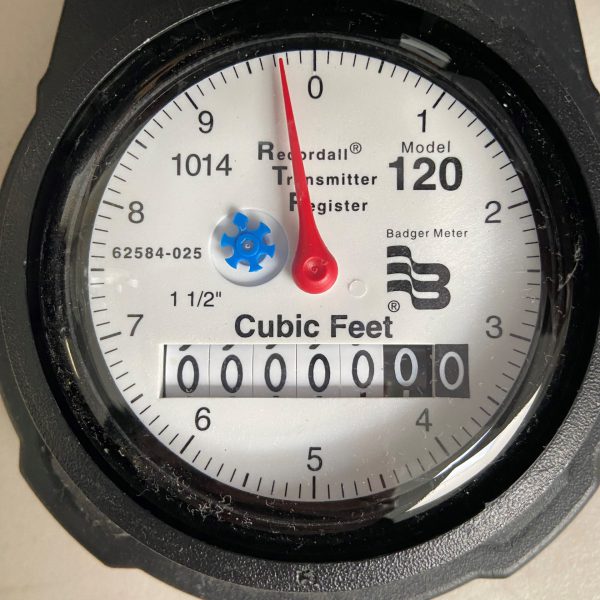
This meter shows water usage with the red needle spinning clockwise as water passes through the meter. One full circle represents 1 cubic foot of water used or 7.48 gallons. This blue dial is a leak detection indicator that moves when small amounts of water pass through the meter. If all appliances, fixtures, and irrigation equipment are turned off and the dial is moving, chances are you have a leak on your property.
LCD Meter
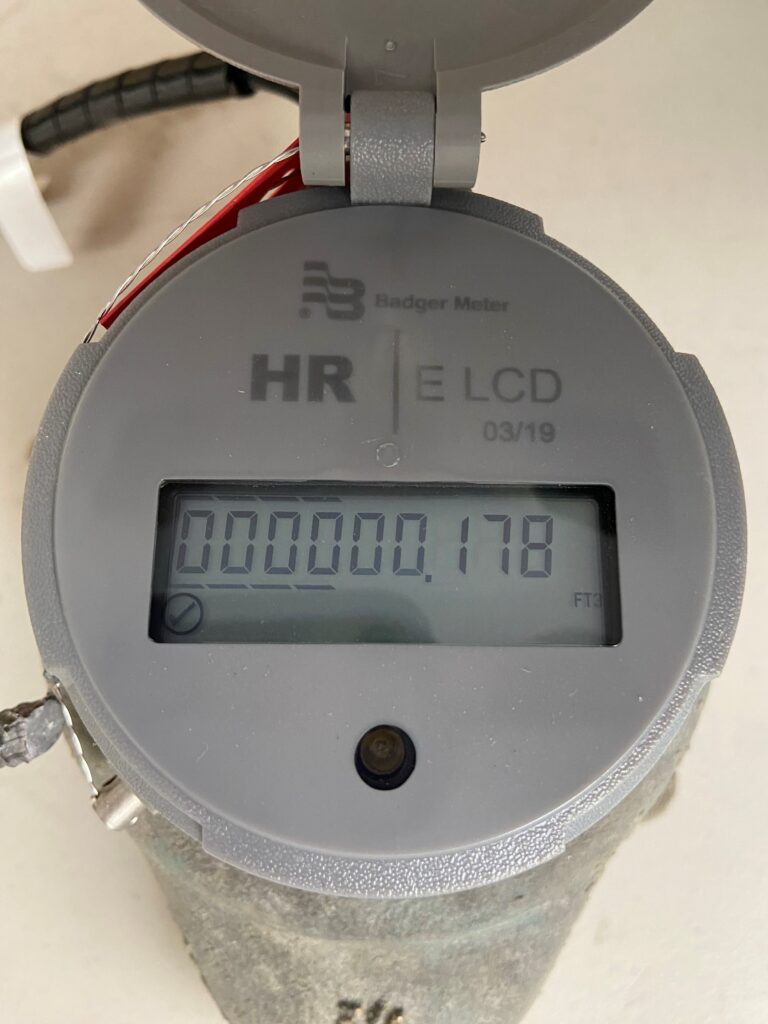
The LCD Screen Meter shows water usage, flow, and has several status indicators.
High Resolution Meter
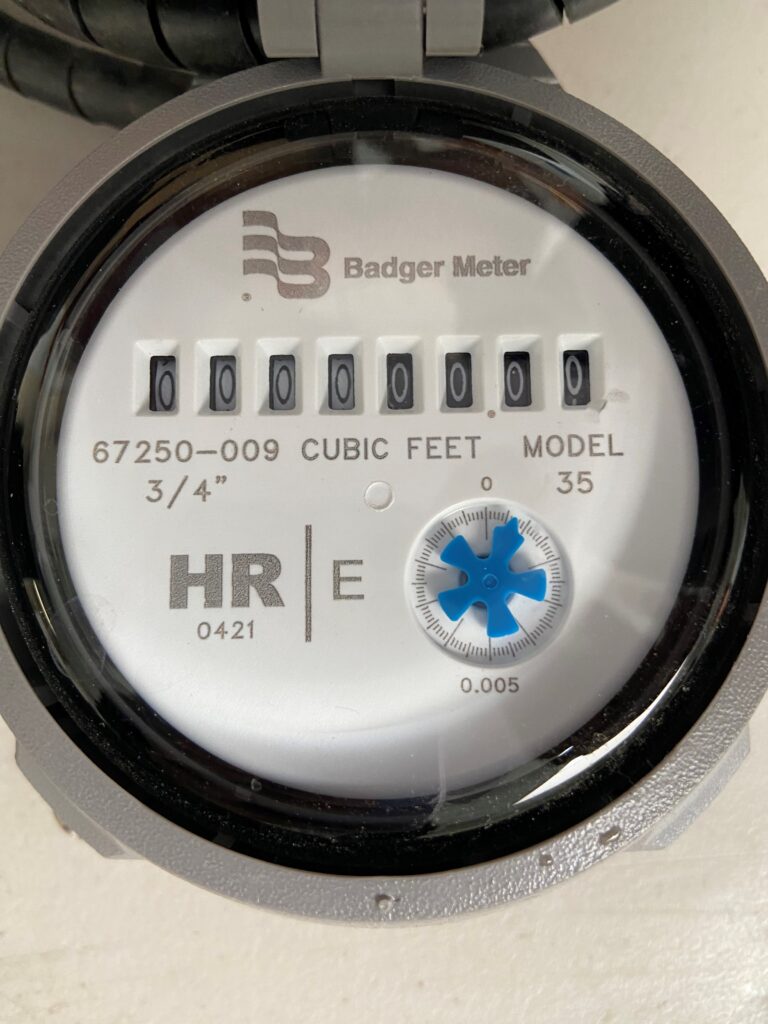
The High Resolution Meter shows water usage using white and black number wheels corresponding to cubic feet. This blue dial is a leak detection indicator that moves when small amounts of water pass through the meter. If all appliances, fixtures, and irrigation equipment are turned off and the dial is moving, chances are you have a leak on your property.
Recycled Water Meter
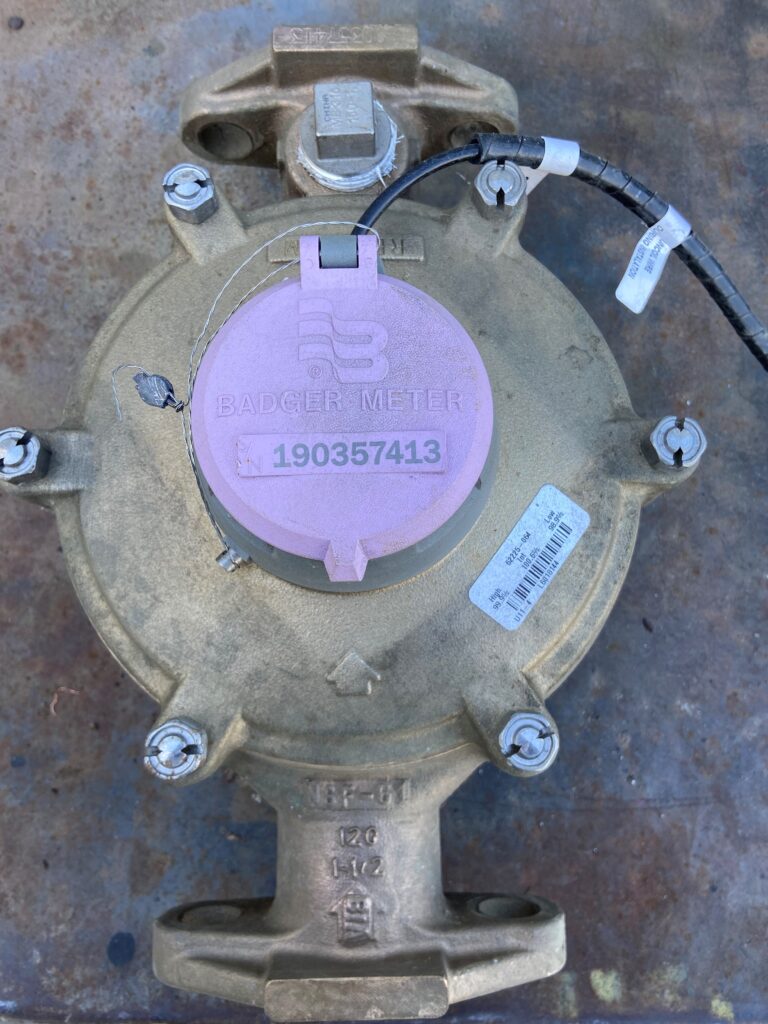
The Recycled Water Meter features an easy-to-read, high-resolution LCD display screen and has purple to indicate that it is a recycled water meter.
